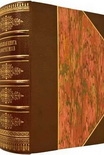The Money Men Chris Bowen (the red fox clan .txt) 📖

- Author: Chris Bowen
Book online «The Money Men Chris Bowen (the red fox clan .txt) 📖». Author Chris Bowen
It is not possible to review the story of William Watt as treasurer without drawing a conclusion of unfulfilled potential, of promise undelivered. In many ways, this is the inevitable result when a prime minister and a treasurer don’t have the requisite amount of mutual respect.
3
SIR EARLE CHRISTMAS GRAFTON PAGE
A Treasurer in Partnership
Born: August 1880, Grafton, NSW
Died: December 1961, Sydney
Treasurer: 9 February 1923 – 21 October 1929
THE LONGEST-SERVING TREASURER of the pre–World War II era, Earle Page had a formidable mind and was a canny figure who helped pioneer coalition politics. The treasurership of Page was an experiment, but the government that brought together the Country Party member and Stanley Melbourne Bruce of the Nationalist Party proved to be a stable one. This was largely due to the relationship that developed between treasurer and prime minister. Bruce and Page were very different: in personality, background and experience. But in many ways theirs was an ideal partnership based on trust and reform, unsullied by ambition on Page’s part or suspicion in Bruce’s quarter.
After its federal conception in 1920, it was conceivable that the Country Party might be subsumed into the Nationalist Party, the dominant conservative group of the day, after the 1923 election. It was also feasible, though less likely, that the Country Party would enter into a coalition with Labor, as it would do in some states. Alternatively, the Country Party could have chosen to remain outside government, simply giving its support on matters of confidence and supply to its conservative city cousins. Instead, a pattern emerged of the Country Party entering into coalition with the dominant conservative party—initially the Nationalist Party, followed by its successors the United Australia Party (UAP) and the Liberal Party—and of its members serving as part of a coalition Cabinet. The agreement that was eventually struck between Bruce on behalf of the Nationalists and Page on behalf of the Country Party has provided a blueprint for relations between the main conservative parties to this day.
Page was the first of only two Country Party federal treasurers. His successor as Country Party leader, Arthur Fadden, joined with him to be treasurer for a combined total of seventeen years. Subsequent Country Party leaders taking part in a coalition government would occupy the deputy prime ministership, as negotiated by Page.
Page was not only a long-serving treasurer; he was also an innovative one, who used his close personal and professional relationship with Bruce for productive purposes. The writer Frank Moorhouse describes the Bruce–Page government as a ‘co-prime ministership’.1 Bruce said of his treasurer: ‘He used to come down from his office to mine practically every morning. He had new brainwaves every day. They were nearly always half-baked … but if you had the patience to listen to Page, he’d come up with a helluva good idea now and then’.2 Page’s colleagues all spoke of his enthusiasm and passion for ideas, describing him as ‘energetic, almost incoherent as he poured out ideas faster than words would come in an orderly fashion’.3
The British politician and publisher Lord Beaverbrook, with whom Page worked on trade policy in the prewar years and also in London during World War II, was the most effusive of all, writing in the foreword to Page’s autobiography: ‘How few statesmen have his breadth of view—and how important it is that men of his calibre should raise their voices in public life. He always reminded me of Abraham Lincoln.’4
Beginnings
The Page family made its mark on the idyllic northern NSW coastal town of Grafton. Earle Page’s grandfather, James, was the town’s mayor, as was Earle’s father Charles. His uncle, Robert, was the mayor of the neighbouring town of Casino. When Page, one of eleven children, came to be named, Grafton was selected as one of his two middle names—the other, Christmas, came from the name of a maternal aunt. Page himself was elected mayor of Grafton in 1918.
Seeing his mother suffer long rail journeys to Sydney for treatment after an accident inspired Page to study medicine, to improve the quality of medical care in Grafton. On his return to Grafton after graduating from the University of Sydney, he was able to modernise the region’s medical services through his private practice and his work at the Grafton Hospital. Perhaps his greatest medical contribution came when, in 1904, he bought one of the first cars ever sold in Australia so that he could get to his patients more quickly when they needed urgent treatment.
Page combined his medical work with his interest in regional development and local politics, playing an integral part in the establishment of the Northern New South Wales Development League. It was at this stage that Page became interested in the ‘New State’ movement, which worked to promote new states, with a focus on emerging regional areas so as to encourage investment and development. He became a passionate supporter of a campaign to create a state called New England, which would comprise the coastal and inland areas of northern NSW. He would pursue this interest throughout his career, and in the 1930s he would come close to achieving his aim, as discussed towards the end of this chapter. Page also showed entrepreneurial flair, buying local paper The Examiner in partnership with other businesspeople and turning it into a daily. Perhaps he thought that owning a newspaper would not be unhelpful when it came to his political ambitions.
So broad were Page’s interests, encompassing constitutional reform, state creation, hydroelectricity, rural development and health, that it was only a matter of time before Grafton Council no longer satisfied his reformist desires. Grafton was part of the federal seat of Cowper, which had been held





Comments (0)